Drivers, mechanics, city officials sound off on potholes in Colorado Springs
COLORADO SPRINGS, Colo. (KRDO) — Yet another round of snow and sub-freezing temperatures will likely contribute to potholes developing, or cause previously-filled potholes to pop out.
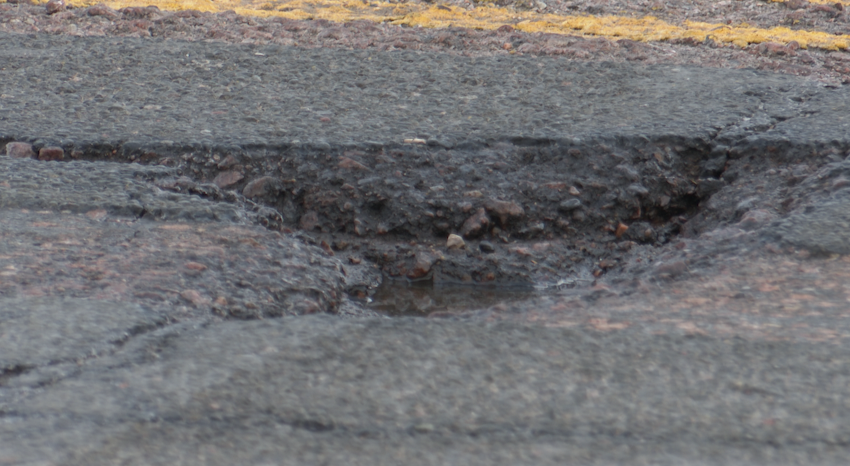
Corey Farkas, the city's operations and maintenance manager for public works, recently explained the challenge that his crews face in responding to pothole complaints.
"If we have winter weather going like today, we don't have any pothole trucks out," he said. "So, there are potholes on our list right now, that are sitting idle because we are in snow and ice operations currently. As soon as we get out of snow operations and get back to normalized operations, then we'll get out and get those potholes filled as quickly as possible."
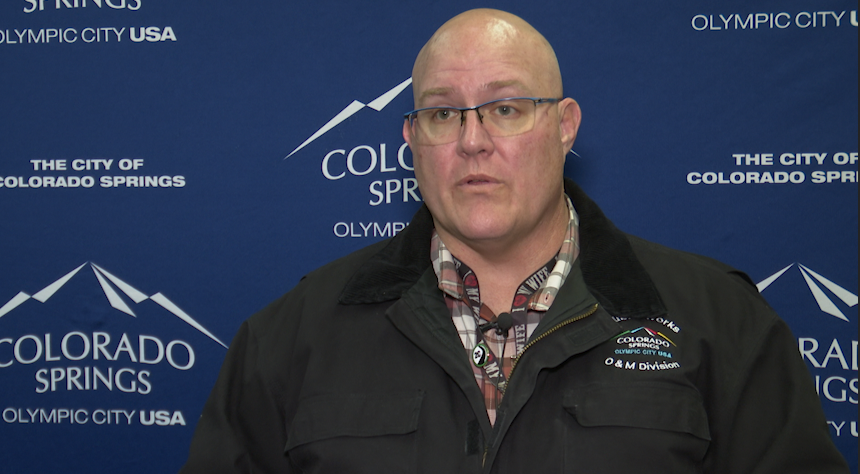
The city has eight full-time crews dedicated to patching potholes, and can increase that number to 12 occasionally; they prioritize repairs based on how dangerous a pothole is, and whether someone has reported a pothole to make them aware of it.
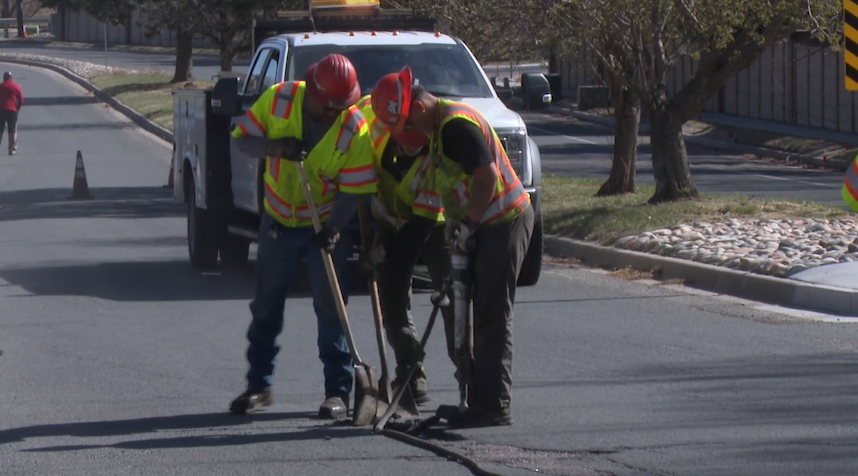
Two weeks ago, a crew filled a particularly large and deep pothole on North Academy Boulevard, near the North Carefree Circle intersection; however by the time that crew arrived, the pothole had caused significant damage to vehicles.
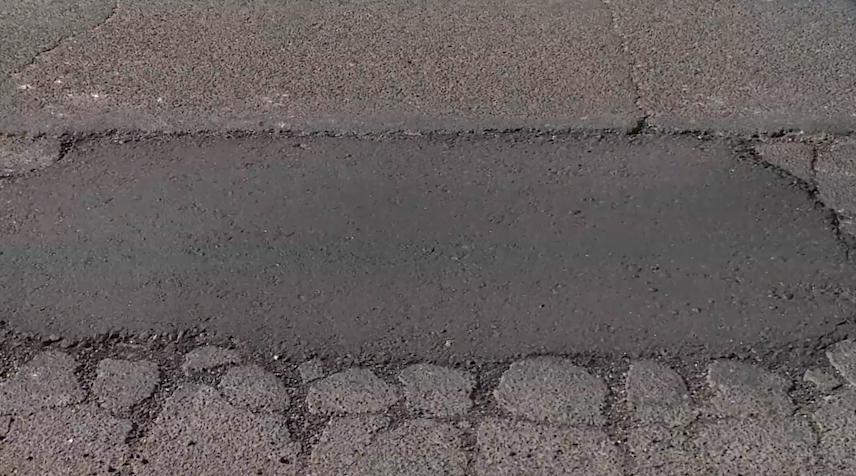
According to Gregory Kelly, a service advisor at nearby John Senter Tire, ten vehicles came to his shop for repairs in a two-day period — with damage ranging from flat tires to alignment and suspension problems.
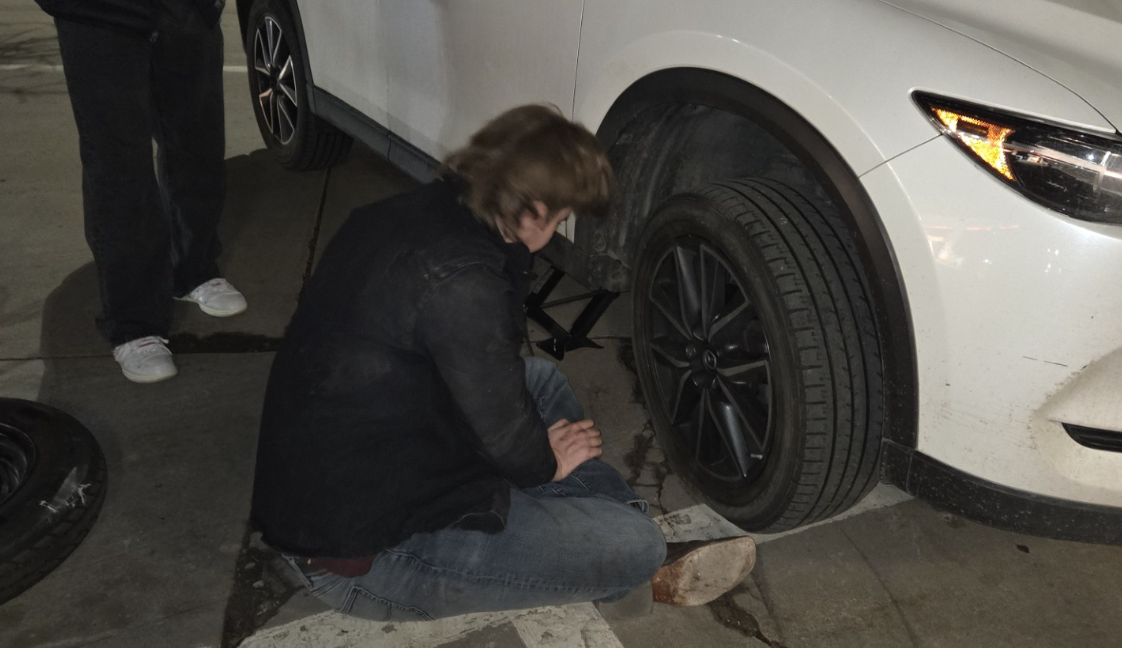
Kelly said that he, himself, drove into the same pothole.
"I drive a bigger vehicle and felt like I dropped the car inside of a whole lower level, just BOOM!" he recalled. "You know, I was concerned that I might even have a flat tire, but thank goodness I didn't. I had a four-wheel drive, larger truck. But yeah, it was pretty scary."

Kelly said that repairing pothole damage can cost drivers from hundreds to thousands of dollars.
Previously, the city said that its risk management office will reimburse drivers for pothole damage only if it was from a pothole that hadn't been reported — which emphasizes the need for prompt reporting.

"That's why we also ask for a lot of information, as much information as we can get on those particular potholes, because we want to fill the dangerous ones first," Farkas said. "If we've got a pothole that's two or three feet in width, we want to fill that one before we fill the pothole that's six inches in width, because, that's going to be a dangerous pothole."
He added that the number of potholes remains steady — with some years approaching or exceeding 100,000 filled — even as 2025 starts the tenth year of the taxpayer-approved 2C expanded paving program.
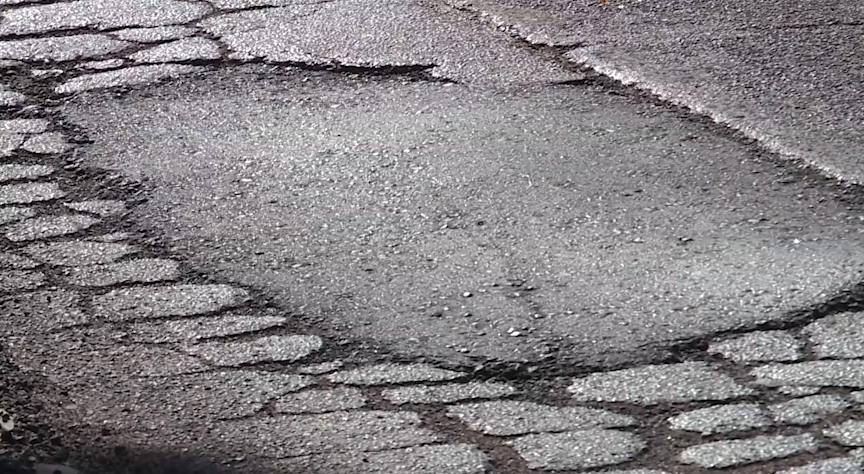
"I don't know that we'll get to a point of seeing a significant decrease until after we're done with the next ten years of 2C [an extension passed by voters for the second time last fall]," Farkas said. "We want to get to a sustainable level of maintenance within the city. We haven't quite gotten to almost the third of our streets within the city."
He said that the city is currently evaluating how it counts the number of potholes filled by its crews.
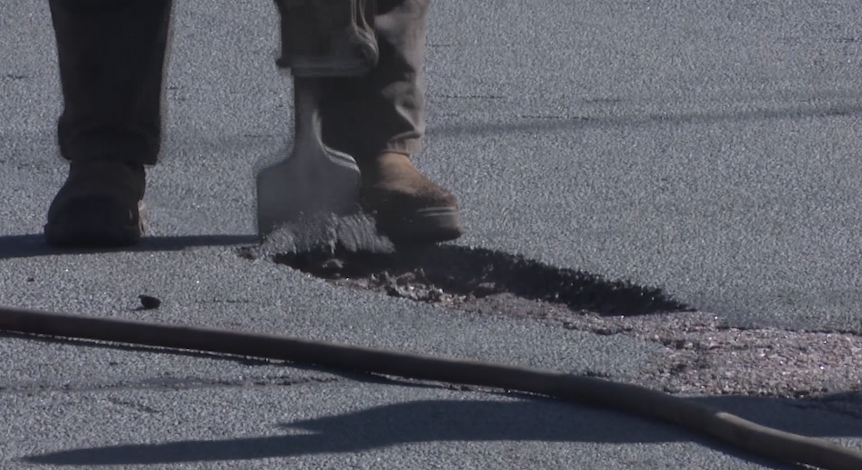
"If you've got, generally speaking, a one-foot by one-foot directive for a pothole, if you've got a pothole that's six inches wide and six feet long, they do their best to try to count how many potholes that would equate to," Farkas said. "We're tinkering around with some ideas to have some different metrics on potholes out there."
He also mentioned that crews can perform better, more lasting repairs during paving season because they have access to hot-mix asphalt.
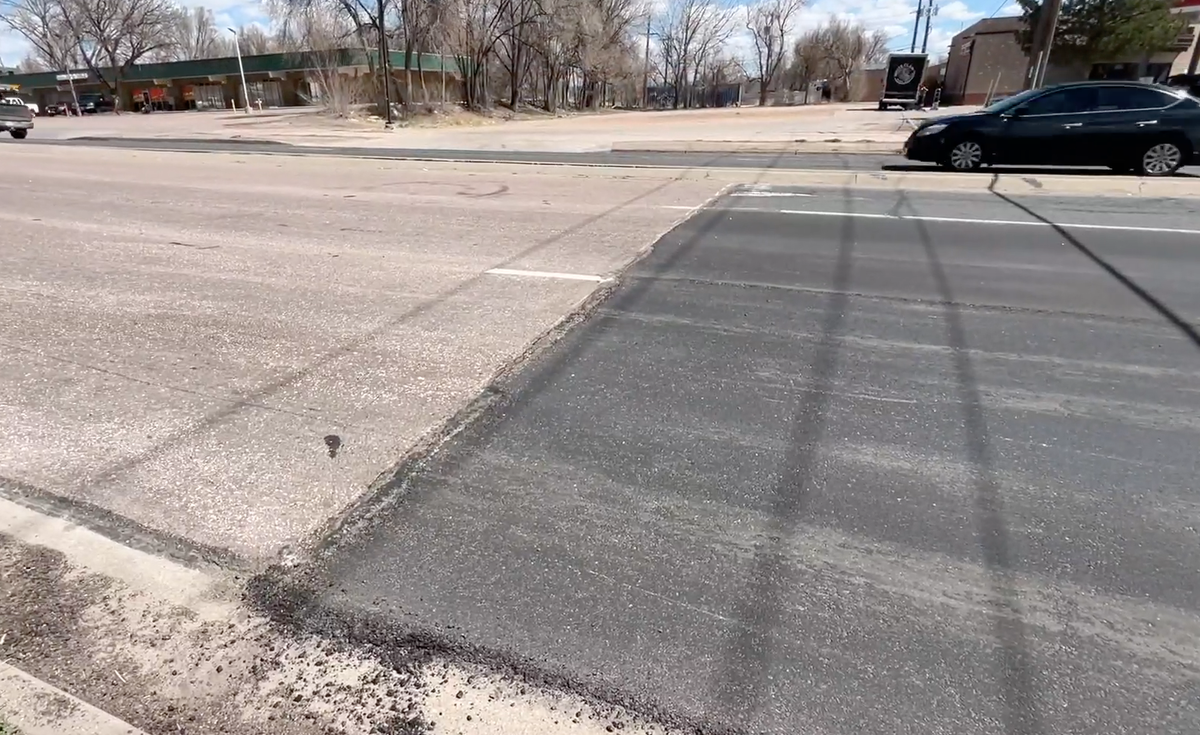
"But it just takes more time and labor," Farkas said, It is. It is more labor intensive. "But again, with the conditions that we have out there right now with winter conditions, in order to get to all the potholes, we do have to fill those potholes rather than repair those potholes. And, those are the ones that we tend to see popping out in weeks or months after they're filled."
He said that the latter category of potholes is filled with cold mix asphalt because most hot mix plants close outside of paving season from mid-spring to mid-fall.
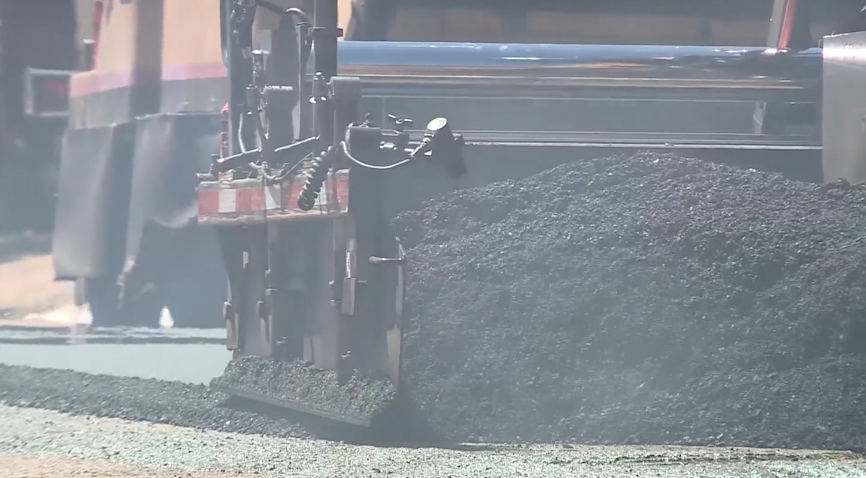
The city's ability to fill potholes depends not only on weather conditions, limited resources in a growing city, and the public's willingness to report them— but also on whether a pothole is within an active or inactive construction zone. For example, the one that many drivers have complained about on South Academy Boulevard between Fountain Boulevard and Jet Wing Drive.
An improvement project started there last year and won't be completed until sometime next year.
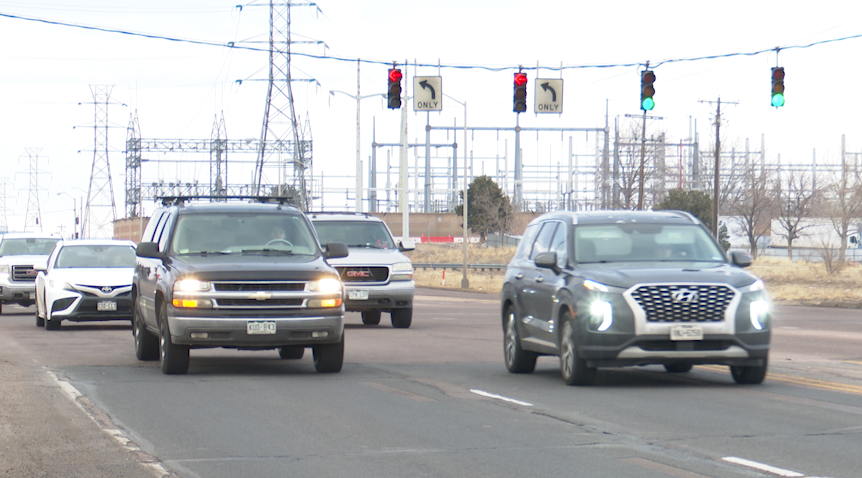
"Our engineering [staff] puts it on their contractors to take care of the potholes within that construction zone," Farkas said. "After they pull out and they pull all of their traffic, then it reverts back to our group for maintaining, potholes in that area."
He said that concrete is a more durable surface than asphalt — which is susceptible to freeze-thaw cycles — but it's also far more expensive.
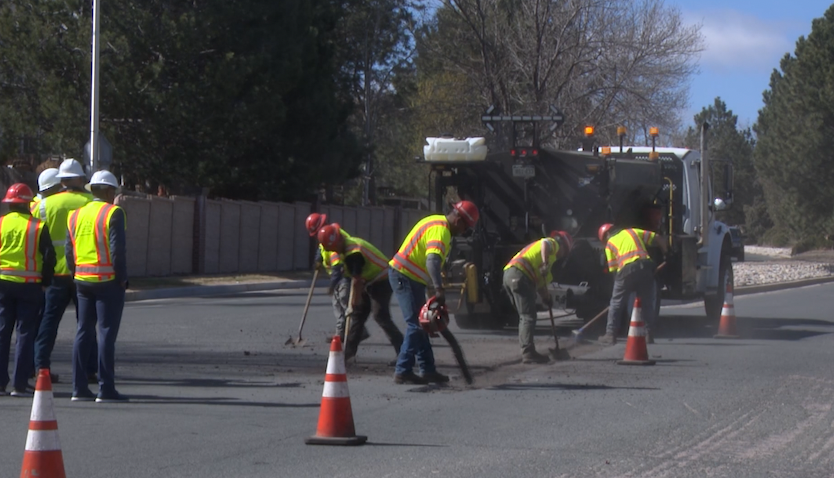
Finally, Farkas asked that drivers be alert for pothole crews and give them plenty of space to work safely.
You can report potholes on the GoCOS smartphone app; more information is available here: https://coloradosprings.gov/reportpothole.
Stay up to date with the latest local news, sports, and investigations by downloading the KRDO13 app. Click here to download it from the Apple App Store. Android users can download it from Google Play here.




